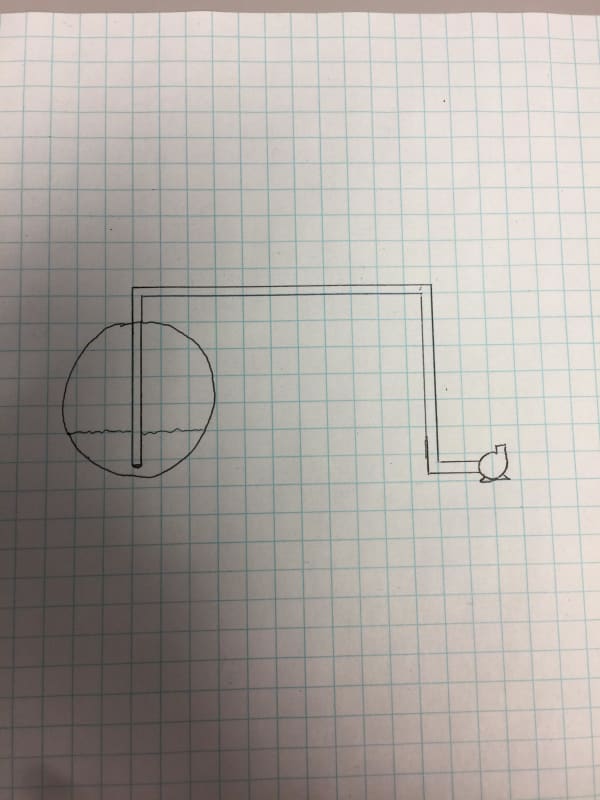flow.help.
Mechanical
- Sep 25, 2019
- 1
I'm working on changing a system my company currently uses to offload a railcar from underneath the tank to the top of it. I'm trying to confirm that there is enough NPSH available, but I can't find anything online that relates to the setup we'll be using - I'll attach a picture and describe it as best as I can.
From the top of the railcar there is a dip tube, submerged in liquid, extending to the bottom of the railcar. We will be designing piping to attach to the top of the dip tube, then run down to a centrifugal pump that's center line is below the railcar. In my NPSHa calculations, would the height difference be the lowest liquid level to the heighest point the liquid will reach in the piping before the pump, or would it be from the lowest liquid level to the pump centerline (i.e. does the flow downwards cancel the height change up)?
Any help would be greatly appreciated.

From the top of the railcar there is a dip tube, submerged in liquid, extending to the bottom of the railcar. We will be designing piping to attach to the top of the dip tube, then run down to a centrifugal pump that's center line is below the railcar. In my NPSHa calculations, would the height difference be the lowest liquid level to the heighest point the liquid will reach in the piping before the pump, or would it be from the lowest liquid level to the pump centerline (i.e. does the flow downwards cancel the height change up)?
Any help would be greatly appreciated.

